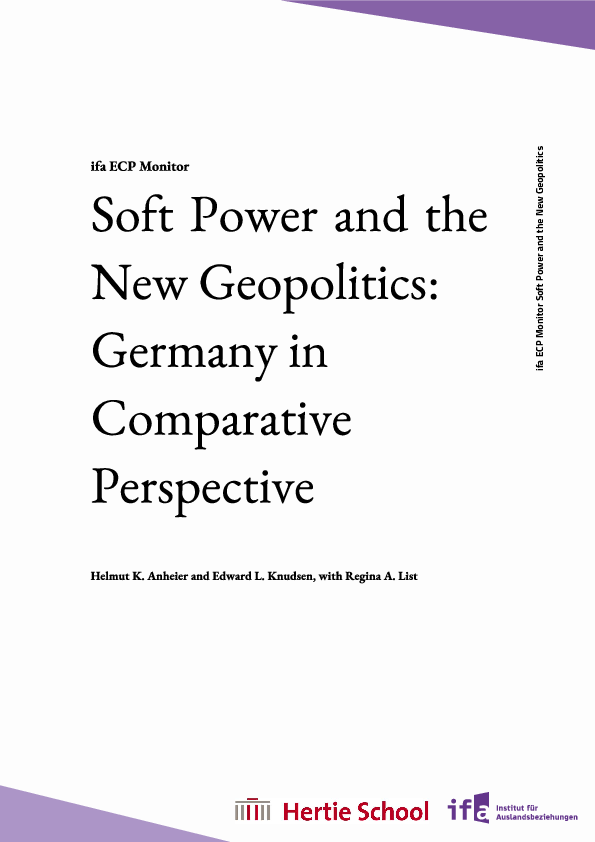However, I believe there is one crucial factor that is still missing: a collective vision and creative imagination regarding what the network can achieve. EUNIC already works fairly successfully in collaborative clusters and develops joint projects, but it has not yet attained the maturity to overcome its members’ anxieties about losing their sovereignty, visibility and even identity by fully committing to European thinking and engaging with European practice and policy. But the wake-up call is there for all to hear. If EUNIC does not awake from its cosy daydreaming, it will miss its opportunity to fulfil its aspirations by taking a leading role.
EUNIC should be about Europe going forward, about putting in place and implementing a strategy for a cohesive, resourceful, impact-rich and sustainable international cultural engagement. Its remit cannot be subsumed to the coordination of collaborative projects, economies of scale and pushy (or even aggressive) European funding development to compensate for shrinking resources at national level.
This network must be about pushing forward, driving the agenda, sharing knowledge, networks and resources to scale up action and effectively impact international relations. Its leitmotif should be ‘A culture of sharing as a strategy of influence’. It should not only reflect on European and global issues but also define and dare to articulate common European political, cultural, educational and institutional responses.
Globalisation has had a major impact on culture and led to the development of new centres of attraction and power, markets, horizontal networks, artistic circuits and cultural practices.
For example, as a European organisation, it could do more to help independent voices in the host countries to gain international exposure and to support democratisation processes through skilled interventions at the crossroads of culture and political determination.
EUNIC already works collaboratively in different formats, in many countries and with diverse partners, both public and private. Now it should go a step further and exemplify how Europe operates cohesively in the world. By listening very carefully to the perceptions and expectations of local communities, responding with political and cultural sensitivity to country and region-specific contexts and needs, creating lasting links between professionals beyond the official circuits, developing fresh ideas for international exchange and collaboration, valuing the hybridism within its own cultures rather than ‘exporting’ traditional cultural images and forms of expression, investing in transnational artistic research and experimentation, supporting long-term creative processes, and engaging coherently and truthfully in European advocacy (making the link between practice and policy), EUNIC could become an inspiring platform that will introduce to the world a new ethos of sharing, mutuality and reciprocity.
The main obstacle to the realisation of this vision is the diversity of foreign cultural policies, practices and means among EU members and the lack of shared determination and enthusiasm. This makes it extremely challenging to set a common agenda. As stated by one of its members, “EUNIC still needs to prove it is more than the mere addition of individual European actions” (Ruth Ur, Head of Arts and Development, British Council on the occasion of the More Europe debate, Paris, 23 May 2012).
If EUNIC is to transform itself into a genuine platform for European practice, learning and advocacy on EU external relations, then this implies new forms of governance and leadership, pilot projects to test out ideas, and increased capacities and resources. At a time when the EU is struggling with austerity measures and budgets are being axed, it seems hardly likely that such a far-reaching approach is on the horizon.
EUNIC should now go a step further and exemplify how Europe operates cohesively in the world.
In conclusion, the global shift of power has impacted on the production, distribution and consumption of culture, and resulted in a new and fascinating cultural landscape. Nevertheless, it has not yet significantly reduced imbalances in cultural exchanges, nor has it led to better-resourced transnational and multilateral cultural cooperation. In the light of this reality, Europe cannot just sit back, navel-gaze and wait for others to lead the way. We must look at ourselves through the mirrors being held up by other regions. We must listen to voices from outside Europe, reflect, and come together as Europeans to act coherently and forcefully.
These are challenging times for all, including the EU, EEAS, EUNIC, the networks and civil society actors who are involved in international cultural exchanges. They all have the urgent task of identifying their particular role in a multipolar world. They all need to find new partners and resources in order to gain critical leverage.
But what is needed the most is a common understanding of what is the ultimate goal and desired effect of Europe’s cultural engagement with other continents. The EU’s developing external cultural relations strategy will have to bring all these partners on board and reconcile national ambitions with European imperatives, as well as public policy interests with civil society practices. “Sharing power as a strategy of influence” would be a smart way forward – valuing the knowledge and experience that each of the partners brings to the table while respecting the creative independence of the cultural sector and civil society.
















